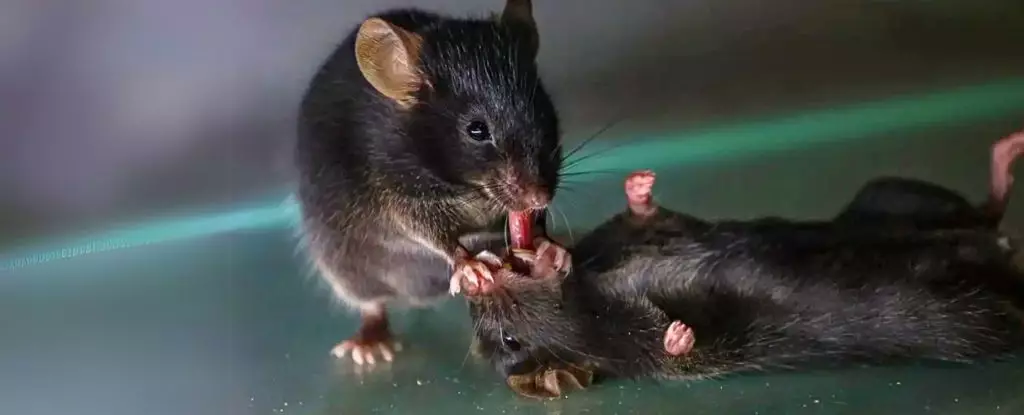In a fascinating exploration of empathy and altruism among animals, a recent study has shed light on the behaviors of mice that exhibit what could be considered rudimentary forms of first aid. Researchers from the University of Southern California (USC) observed that these so-called “bystander” mice engage in efforts to revive their unconscious companions. This study suggests that the inclination to assist others in distress may not be solely a human characteristic but rather a trait deeply embedded in the evolutionary fabric of mammals.
The research team, led by neuroscientist Wenjian Sun, discovered significant neural activities associated with these rescue behaviors. Remarkably, specific areas of the mouse brain that control involuntary functions showed heightened activity during these events. Coupled with increased hormonal signaling, these physiological responses appear essential for the mice’s attempts to save their unconscious peers. The findings challenge the notion that helping behaviors are exclusively complex and introduce the idea that even simpler mammals can display sophisticated social interactions.
While the “first aid” offered by mice may seem unconventional, involving more biting and less gentle care than human interventions, the mechanics of their rescue efforts are quite intriguing. For instance, the tongue-pulling technique employed by the conscious mice has been shown to enhance the airways of their incapacitated counterparts, facilitating quicker recovery. This quirky yet effective method highlights the adaptive strategies that animals can develop to preside over the well-being of their species, even at the smallest scales.
A particularly compelling aspect of the study is the notion of familiarity bias. The research indicated that buddy mice were more inclined to attempts to resuscitate companions they recognized rather than unfamiliar ones. This suggests a level of cognitive processing; the bystander mice were not merely responding to instinctive stimuli but were considering the familiarity and identity of their companions. As neuroscientist James Burkett, who did not participate in the study, noted, this behavior indicates a deliberate evaluation rather than a mere reflex to an unconscious animal.
The study consisted of various controlled experiments, in which trained researchers presented mice with different scenarios, including dead, unconscious, and immobile peers. In half of these instances, the conscious bystander mouse engaged in the tongue-pulling maneuver, significantly improving the recovery rate compared to solitary peers. While the actions of sniffing and grooming preceded these attempts, the more intense physical intervention highlighted the mice’s awareness and urgency in responding to the plight of their companions.
Implications and Broader Context
The implications of this study extend beyond the world of rodents. Evidence from research on larger-brained mammals, like dolphins and elephants, has long documented similar rescue behaviors, suggesting inherent social bonds. The exploration of altruism in small mammals provides a broader understanding of empathetic behavior across species, giving insight into the evolutionary roots of social interactions among sentient beings.
As researchers continue to delve into the complex world of animal behavior, findings like those of the USC study reinforce the understanding that the capacity for kindness may be more universal than previously thought. Whether the helping behaviors observed in mice are instinctual or indicative of a deeper understanding of their companions’ needs remains a matter for future studies. However, what is clear is that even in the most unexpected corners of the animal kingdom, there exists a profound and fundamental urge to care for one another, highlighting the interconnectedness of all living beings in the narrative of life. This burgeoning area of research opens avenues to further explore the cognitive capacities of smaller mammals, reshaping our understanding of empathy in the animal world.


Leave a Reply